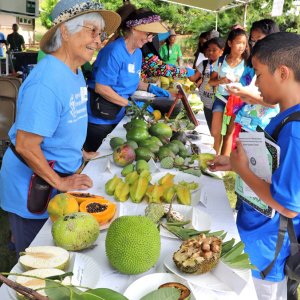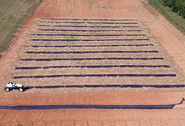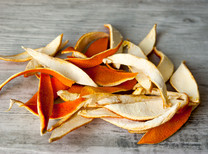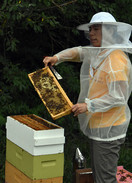|
Having trouble viewing this email? View it as a Web page.

|
|
|
Editor: Kelly Sprute Aug. 19, 2020
Making a Difference

University of Hawaiʻi to Receive $1.5 Million for Food, Agriculture and Natural Resources
The University of Hawaiʻi will receive $1.5 million in grant funding from USDA’s National Institute of Food and Agriculture to expand education programs focused on food, agriculture and natural resources. This funding is part of a competitive grant program for Alaska Native and Native Hawaiian-Serving Institutions to promote educational equity for underrepresented students, expand education programs, and provide job training in these fields.
“The food insecurity too many families are facing during the coronavirus pandemic only further highlights the urgency of Hawaii’s efforts to promote food and agriculture sustainability,” Senator Hirono said. “This grant funding will support the University of Hawaiʻi’s work to increase educational and job training opportunities for Native Hawaiian students in these critical fields. I will continue to advocate for robust funding to support Native Hawaiian-serving institutions as we continue our work to diversify our economy and increase our food security.” For more information, read the University of Hawaii article.
Photo of Oʻahu Master Gardeners show fifth grade students some of the fruits and vegetables that are grown locally during Agriculture Awareness Day.
|
|
|

Enjoy Those Strawberries Longer: PhylloLux Innovation Leads the Way
We’ve all enjoyed some delicious strawberries this summer, but a short-shelf life can limit that enjoyment. One of the biggest challenges in U.S. strawberry production is managing diseases and pests. The fungal pathogen Botrytis cinerea results in gray mold, or the unappetizing gray fuzz that can quickly appear on strawberries all too soon after we get them home. Growers typically apply fungicides on a weekly basis to control gray mold as well as other fungal diseases. Agricultural Research Service researchers developed an alternative technology called PhylloLux, which combines Ultraviolet-C (UV-C) irradiation followed by a specific dark period. For more information, read the USDA article.
|

More about those "Mystery Seeds" from China
Here's the latest on those mysterious seeds being sent unsolicited from China. USDA’s Gary Crawford talks with USDA's Animal and Plant Health Inspection Service Specialist Osama El-Lissy on the updates of those ‘mysterious seed’ showing up in people’s mailboxes. For more information, listen to the USDA broadcast.
|

NIFA Career Opportunities
We are hiring! Remember to check out NIFA's Career Opportunities webpage, where there is a direct link to all open positions. You can also explore NIFA jobs at the USAjobs.gov website. Current openings in Kansas City, Missouri:
Biological Science Specialist, GS 9-11
Closing date: 8/24/2020
Social Science Specialist, GS 11
Closing date: 8/24/2020
Equal Opportunity Specialist, GS 13
Closing date: 8/27/2020
Financial Policy Specialist, GS 9-12
Closing date: 8/28/2020
Biological/Social Science Specialist (National Program Leader), GS 13-15
Closing date: 9/30/2020
|

Howard University Professor to Research 3D Food Printing for Plant Proteins
Howard University Chemical Engineering Assistant Professor Solmaz Tabtabaei, Ph.D., recently received a four-year $450,000 AFRI grant from USDA’s National Institute of Food and Agriculture to further her research into 3D food printing for legumes and cereals. “Ultimately my team’s goal is to develop eco-friendly bioseparation technologies for the production of novel plant-based protein-rich (3D) snack foods free of chemical residues with the aim of concurrently addressing major issues in sustainable energy, human nutrition, and the environment,” Tabtabaei says. She will examine certain behaviors that are observable during the implementation of a tribo-electrostatic separation, a technique used to classify legumes and cereals into their major constituents of protein and starch. She will use the resulting protein-enriched fractions as printing materials for extrusion-based 3D printing to produce nutritionally balanced protein snacks. For more information, read the Howard University article.
3D printing a Kiwi graphic courtesy of Getty Images.
|

Orange Peels May Help Boost Heart Health by Modifying Gut Microbiota
Scientists are looking at how orange peels can potentially boost heart health by modifying gut bacteria.
Yu Wang of the University of Florida is leading the research through a $500,000 grant from USDA-National Institute of Food and Agriculture’s Agriculture and Food Research Initiative. If findings end up as expected, not only will heart health be improved, but 5 million tons of orange peels that are mostly thrown away will be put to good use. The researchers hypothesize that because orange peels have components that interfere with TMA enzymes, they can modify gut microbiota and help prevent atherosclerosis, a disease in which plaques form on the inner walls of arteries, because orange peels have components that interfere with TMA enzymes. For more information, read the University of Florida article.
Orange peel image courtesy of Getty Images.
|

Work is buzzing at Central State University
Research and extension efforts at Central State University are literally buzzing through the apiculture (bee) program coordinated by CSU Research Assistant Professor Hongmei Li-Byarlay, Ph.D. The growing academic program maintains a bee yard at the CSU research farms as well as working with local beekeepers and researchers throughout the nation. Apiculture research at Central State University is funded in part by the USDA-NIFA. For more information, read the Central State University article.
|

Notice of Intent to Extend Without Change a Currently Approved Information Collection
Federal Register published on Aug. 18, a notice entitled, "Notice of Intent to Extend Without Change a Currently Approved Information Collection.”
In accordance with the Paperwork Reduction Act of 1995 and Office of Management and Budget regulations, this notice announces the National Institute of Food and Agriculture's intention to extend without change, a currently approved information collection entitled, “Research, Education, and Extension project online reporting tool (REEport).”
Written comments on this notice must be received by Oct. 19, 2020. After that date, comments will be considered to the extent practicable. For more information, read the Federal Register notice.
|
NIFA Invests $8 Million to Improve Sustainable Agricultural Productivity
NIFA recently awarded 11 Agricultural Microbiomes in Plant Systems and Natural Resources grants as part of the Agriculture and Food Research Initiative - Foundational and Applied Science priority area. This program focuses on understanding the multipartite interactions among the host, environment, and the microbiome; thereby providing information critical for improving and sustaining agricultural productivity. Research will help fill major knowledge gaps in characterizing agricultural microbiomes and microbiome functions across agricultural production systems and natural resources.

|
|
|
NIFA’s mission is to invest in and advance agricultural research, education, and extension that solve societal challenges. NIFA’s investments in transformative science directly support the long-term prosperity and global preeminence of U.S. agriculture. Keep informed about NIFA, USDA, our land-grant and non-land-grant university partners, and stakeholders with the NIFA Update. Read past issues online, sign up for email updates or follow us on Twitter @USDA_NIFA, #NIFAImpacts or LinkedIn @usda-nifa.
If you wish to submit a news item or information, send an email to NIFAUpdate.
USDA is an equal opportunity lender, provider, and employer.
|
|
|
|